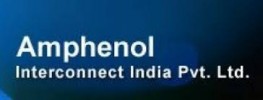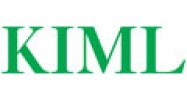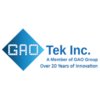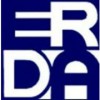Filter interviews by
Theeta Electricals Production Engineer Team Lead Interview Questions and Answers
8 Interview questions
Rejection analysis is the process of identifying and understanding the reasons for product or process failures.
Rejection analysis helps in identifying the root causes of failures.
It involves analyzing rejected products or components to determine the reasons for rejection.
The analysis may include examining manufacturing processes, quality control measures, and product specifications.
By understanding the reasons for...
TPM stands for Total Productive Maintenance, a systematic approach to equipment maintenance that aims to maximize productivity and minimize downtime.
TPM focuses on proactive and preventive maintenance to improve equipment reliability and performance.
It involves the participation of all employees in the maintenance process.
TPM aims to eliminate all losses, including breakdowns, setup and adjustment time, and defect...
OEE (Overall Equipment Efficiency) is a calculation used to measure the effectiveness of a production process.
OEE is a metric that combines availability, performance, and quality to determine the overall efficiency of a production line.
It is calculated by multiplying the availability, performance, and quality factors together.
OEE provides insights into how well the equipment is being utilized and identifies areas ...
SPM machine stands for Special Purpose Machine. It is a custom-built machine designed to perform specific manufacturing tasks efficiently.
SPM machines are designed for specific manufacturing tasks and are not versatile like general-purpose machines.
They are often used in industries like automotive, aerospace, and electronics.
Examples of SPM machines include CNC machines, drilling machines, and assembly machines.
Th...
The 7QC tools are a set of quality control tools used in production engineering to identify and solve quality-related issues.
The 7QC tools include: Pareto chart, cause-and-effect diagram, check sheet, control chart, histogram, scatter diagram, and flowchart.
These tools help in analyzing data, identifying root causes of problems, and implementing corrective actions.
For example, a Pareto chart can be used to priorit...
TPM-JH stands for Total Productive Maintenance - Jishu Hozen.
TPM-JH is a maintenance methodology used to improve equipment effectiveness and reduce downtime.
It focuses on proactive maintenance activities to prevent equipment failures.
Jishu Hozen is a Japanese term meaning autonomous maintenance.
TPM-JH involves training operators to perform routine maintenance tasks and inspections.
It aims to create a culture of ow...
Kaizen is a continuous improvement philosophy in production engineering that encourages employees to suggest and implement ideas for process improvement.
Kaizen is a Japanese term meaning 'change for the better' or 'continuous improvement'.
It involves small, incremental changes made by employees to improve processes, reduce waste, and increase efficiency.
Kaizen encourages a culture of continuous learning, problem-s...
Cycle time is the total time it takes to complete a process or task, while take time is the time it takes for an individual to complete their part of the process.
Cycle time is a measure of efficiency and productivity.
Take time is the time taken by an individual to complete their specific task within the overall cycle time.
Cycle time includes all the steps and activities involved in completing a process.
Take time c...
Theeta Electricals Production Engineer Team Lead Interview Experiences
1 interview found
I applied via Naukri.com and was interviewed in Dec 2023. There were 2 interview rounds.
(10 Questions)
- Q1. Self introduction
- Q2. Jobs responsibility
- Q3. Update Line in FMDC bord
- Ans.
To update the line in FMDC board, follow these steps:
Access the FMDC board
Identify the line that needs to be updated
Make necessary changes or modifications to the line
Ensure the updated line meets the required specifications
Test the updated line for functionality and quality
Document the changes made for future reference
- Q4. What is this oee calculation
- Ans.
OEE (Overall Equipment Efficiency) is a calculation used to measure the effectiveness of a production process.
OEE is a metric that combines availability, performance, and quality to determine the overall efficiency of a production line.
It is calculated by multiplying the availability, performance, and quality factors together.
OEE provides insights into how well the equipment is being utilized and identifies areas for i...
- Q5. What is this kaizen and suggestion
- Ans.
Kaizen is a continuous improvement philosophy in production engineering that encourages employees to suggest and implement ideas for process improvement.
Kaizen is a Japanese term meaning 'change for the better' or 'continuous improvement'.
It involves small, incremental changes made by employees to improve processes, reduce waste, and increase efficiency.
Kaizen encourages a culture of continuous learning, problem-solvin...
- Q6. What is this tpm
- Ans.
TPM stands for Total Productive Maintenance, a systematic approach to equipment maintenance that aims to maximize productivity and minimize downtime.
TPM focuses on proactive and preventive maintenance to improve equipment reliability and performance.
It involves the participation of all employees in the maintenance process.
TPM aims to eliminate all losses, including breakdowns, setup and adjustment time, and defects.
It ...
- Q7. What's is this TPM-JH
- Ans.
TPM-JH stands for Total Productive Maintenance - Jishu Hozen.
TPM-JH is a maintenance methodology used to improve equipment effectiveness and reduce downtime.
It focuses on proactive maintenance activities to prevent equipment failures.
Jishu Hozen is a Japanese term meaning autonomous maintenance.
TPM-JH involves training operators to perform routine maintenance tasks and inspections.
It aims to create a culture of ownersh...
- Q8. About your previous organization
- Q9. What's is this 7QC tool
- Ans.
The 7QC tools are a set of quality control tools used in production engineering to identify and solve quality-related issues.
The 7QC tools include: Pareto chart, cause-and-effect diagram, check sheet, control chart, histogram, scatter diagram, and flowchart.
These tools help in analyzing data, identifying root causes of problems, and implementing corrective actions.
For example, a Pareto chart can be used to prioritize q...
- Q10. What's is this cycle time and take time
- Ans.
Cycle time is the total time it takes to complete a process or task, while take time is the time it takes for an individual to complete their part of the process.
Cycle time is a measure of efficiency and productivity.
Take time is the time taken by an individual to complete their specific task within the overall cycle time.
Cycle time includes all the steps and activities involved in completing a process.
Take time can va...
(3 Questions)
- Q1. Please tell me behind Organisation jobs responsibility.
- Q2. What's is this rejection analysis
- Ans.
Rejection analysis is the process of identifying and understanding the reasons for product or process failures.
Rejection analysis helps in identifying the root causes of failures.
It involves analyzing rejected products or components to determine the reasons for rejection.
The analysis may include examining manufacturing processes, quality control measures, and product specifications.
By understanding the reasons for reje...
- Q3. What is this spm machine
- Ans.
SPM machine stands for Special Purpose Machine. It is a custom-built machine designed to perform specific manufacturing tasks efficiently.
SPM machines are designed for specific manufacturing tasks and are not versatile like general-purpose machines.
They are often used in industries like automotive, aerospace, and electronics.
Examples of SPM machines include CNC machines, drilling machines, and assembly machines.
These m...
Top trending discussions






Interview questions from similar companies

Production Engineer Interview Questions & Answers
Amphenol Interconnectposted on 11 Mar 2024
(1 Question)
- Q1. About injection molding

Production Engineer Interview Questions & Answers
Amphenol Interconnectposted on 14 Feb 2025
I appeared for an interview before Feb 2024.
(4 Questions)
- Q1. Machine parameters and instruments and products process, material
- Q2. Reduce cycle time and setup time suggestion
- Ans.
Implementing lean manufacturing principles can help reduce cycle time and setup time.
Implementing Single Minute Exchange of Die (SMED) techniques to reduce setup time
Optimizing production flow to minimize waiting time and bottlenecks
Utilizing automation and technology to streamline processes
Training employees on efficient work practices and continuous improvement
Regularly reviewing and analyzing production data to iden...
- Q3. Cutting tool specification and drill tap.
- Q4. Threading knurling grooving pramater deep

Production Supervisor Interview Questions & Answers
Amphenol Interconnectposted on 5 Jun 2025
I appeared for an interview in May 2025, where I was asked the following questions.
- Q1. What are you doing good management to team
- Ans.
Effective management involves clear communication, team empowerment, and fostering a positive work environment.
Establish open communication channels: Regular team meetings to discuss goals and challenges.
Empower team members: Delegate responsibilities and encourage decision-making to boost confidence.
Provide constructive feedback: Regularly recognize achievements and offer guidance for improvement.
Foster a positive wor...
- Q2. What are you doing your pramotion
- Ans.
I am actively enhancing my skills and leadership qualities to prepare for a promotion to Production Supervisor.
Pursuing relevant certifications in production management to deepen my knowledge.
Taking on additional responsibilities in my current role to demonstrate my capability.
Seeking mentorship from current supervisors to gain insights into effective leadership.
Participating in cross-functional projects to broaden my ...
- Q3. What are you doing your team do working
- Ans.
I ensure my team collaborates effectively, maintains quality standards, and meets production goals through clear communication and support.
Conduct regular team meetings to discuss progress and address challenges.
Implement a quality control process to minimize defects, such as peer reviews.
Encourage team members to share ideas for process improvements, leading to a 10% increase in efficiency.
Provide training sessions to...
- Q4. Why you exit current company
- Ans.
I am seeking new challenges and opportunities for growth that align with my career goals and aspirations.
Desire for career advancement: I feel that I have reached a plateau in my current role and am eager to take on more responsibilities.
Seeking a better cultural fit: I am looking for a company whose values align more closely with my own, particularly in teamwork and innovation.
Interest in new technologies: I want to w...
Interview Preparation Tips

Production Engineer Interview Questions & Answers
Amphenol Interconnectposted on 31 Oct 2023
I applied via Recruitment Consulltant and was interviewed before Oct 2022. There were 2 interview rounds.

(5 Questions)
- Q1. Personal and family
- Q2. Education acadmic and extra activities
- Q3. Past experience
- Q4. Behavior and salery expectations
- Q5. Why r u choosing this Company
Interview Preparation Tips
- Engineering
- mba

Production Supervisor Interview Questions & Answers
East India Udyogposted on 26 Sep 2021
I applied via Walk-in and was interviewed in Sep 2021. There was 1 interview round.
Interview Questionnaire
6 Questions
- Q1. Production regards
- Q2. Production manpower handling
- Q3. Quality regarding
- Q4. Five s regards
- Q5. Handling process
- Q6. Sefty regards
Interview Preparation Tips

Production Engineer Interview Questions & Answers
Great White Globalposted on 21 Jun 2024
Great knowledge on c
(2 Questions)
- Q1. What is H bridge
- Ans.
An H bridge is an electronic circuit that enables a voltage to be applied across a load in either direction.
Consists of four switching elements (transistors or MOSFETs)
Allows bidirectional control of a load
Commonly used in motor control applications
Can be used to control the direction of DC motors
- Q2. What is a transformer in an appliance
- Ans.
A transformer in an appliance is a device that converts high voltage electricity to lower voltage for safe use.
Transformers consist of primary and secondary coils of wire wrapped around a core
They work on the principle of electromagnetic induction
Examples include transformers in power adapters for electronic devices
Interview Preparation Tips

Production Engineer Interview Questions & Answers
SasMos HET Technologiesposted on 10 Oct 2022
I applied via Campus Placement and was interviewed in Apr 2022. There were 4 interview rounds.

I attend aptitude test very well , It is my first interview, It was very good experince to me then i never forget that test they will give questions in the test within my syllabus only they give mathematical conversions also iam very thrilled to write the exam finally iam written the exam and i will successfully passed the exam
(2 Questions)
- Q1. Did you know about soldering and what is the criteria for soldering?
- Ans.
Yes, soldering is a process of joining two or more metal components using a filler metal called solder.
Soldering is a common technique used in electronics and metalworking industries.
The criteria for soldering include proper cleaning of the surfaces to be soldered, applying flux to promote bonding, and heating the solder to its melting point.
The solder should flow smoothly and evenly to create a strong bond.
The solder ...
- Q2. What are colours for colour coding?
- Ans.
Colour coding is a system of assigning specific colors to objects or categories for easy identification and organization.
Colour coding helps in quickly identifying and distinguishing objects or categories.
Different industries and fields use different color coding systems.
Examples of color coding include: red for danger, green for safety, blue for water, yellow for caution, etc.
(4 Questions)
- Q1. Tell about your self?
- Ans.
I am a Production Engineer with experience in optimizing manufacturing processes and ensuring efficient production.
Experienced in analyzing production data and identifying areas for improvement
Proficient in implementing lean manufacturing principles to increase productivity
Skilled in troubleshooting and resolving production issues
Strong knowledge of production equipment and machinery
Effective in collaborating with cros...
- Q2. You have any work experice and where?
- Ans.
Yes, I have work experience as a Production Engineer.
Worked as a Production Engineer at XYZ Manufacturing for 3 years
Managed production processes and ensured smooth operations
Implemented lean manufacturing principles to improve efficiency
Collaborated with cross-functional teams to resolve production issues
Implemented quality control measures to ensure product standards
Trained and supervised production staff
- Q3. What you have worked on that company
- Ans.
I have worked on various projects at the company, including optimizing production processes and implementing new technologies.
Optimized production processes to increase efficiency
Implemented new technologies to improve product quality
Collaborated with cross-functional teams to troubleshoot and resolve production issues
Developed and executed test plans to ensure product reliability
Led continuous improvement initiatives ...
- Q4. Production and quality
Interview Preparation Tips
- Advanced Java
- Problem Solving
- C++
- Software
- MS Office

Project Engineer Interview Questions & Answers
Swelect Energy Systemsposted on 13 Jun 2022
(2 Questions)
- Q1. Asking about solar knowledge
- Q2. Solar PV Module and design orientated
(2 Questions)
- Q1. Asked about salary expectation
- Q2. Asked about joining date
Interview Preparation Tips

Production Manager Interview Questions & Answers
Kyungshin Industrial Mothersonposted on 10 May 2024
I applied via Campus Placement and was interviewed in Apr 2024. There were 2 interview rounds.
Group discussion is very friendly way ☺️
(2 Questions)
- Q1. They ask like how to motivate a a worker and employment so do the work
- Ans.
Motivating workers involves understanding their needs, providing support, and fostering a positive work environment.
Recognize achievements: Acknowledge individual and team successes to boost morale. For example, celebrate project completions with a team lunch.
Provide growth opportunities: Offer training and development programs to help employees advance their skills and careers.
Encourage open communication: Create a cu...
- Q2. For this type worker you do the work so company achieve more goal and company achieve a more profit soI share with you
Interview Preparation Tips
- Hr
Theeta Electricals Interview FAQs
Tell us how to improve this page.
Theeta Electricals Interviews By Designations
- Theeta Electricals Planning Engineer Interview Questions
- Theeta Electricals Senior Engineer Mechanical Interview Questions
- Theeta Electricals MIS Executive Interview Questions
- Theeta Electricals Senior Engineer Interview Questions
- Theeta Electricals Permanent job Life Time Interview Questions
- Theeta Electricals Production Manager Interview Questions
- Theeta Electricals Production Engineer Team Lead Interview Questions
- Theeta Electricals Senior Quality Engineer Interview Questions
- Show more
Interview Questions for Popular Designations
- Production Engineer Interview Questions
- Project Engineer Interview Questions
- Junior Engineer Interview Questions
- Production Supervisor Interview Questions
- Production Manager Interview Questions
- Production Officer Interview Questions
- Graduate Engineer Interview Questions
- Executive Engineer Interview Questions
- Show more
Overall Interview Experience Rating
based on 1 interview experience
Difficulty level
Duration
Interview Questions from Similar Companies
|
Production Engineer
27
salaries
| ₹2.3 L/yr - ₹4.8 L/yr |
|
Purchase Executive
12
salaries
| ₹2.2 L/yr - ₹4.2 L/yr |
|
Senior Production Engineer
11
salaries
| ₹3.2 L/yr - ₹4.8 L/yr |
|
Quality Engineer
8
salaries
| ₹2.5 L/yr - ₹4 L/yr |
|
Senior Engineer
6
salaries
| ₹3.8 L/yr - ₹5 L/yr |

GAO Tek

Amphenol Interconnect

Kyungshin Industrial Motherson

Electrical Research & Development Association
- Home >
- Interviews >
- Theeta Electricals Interview Questions










